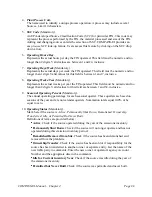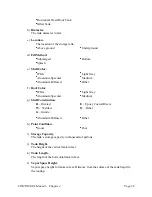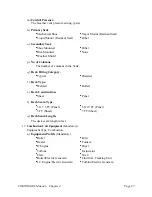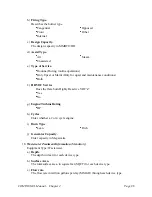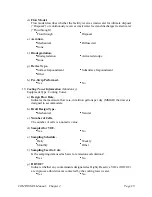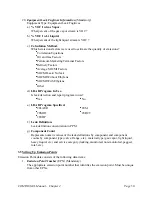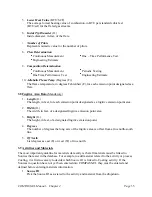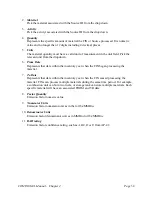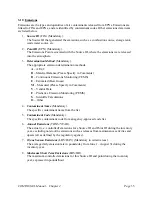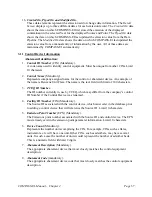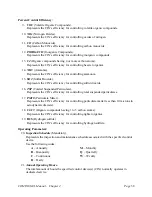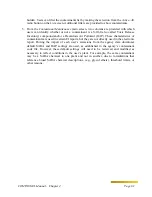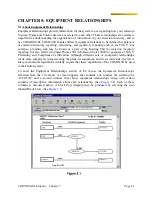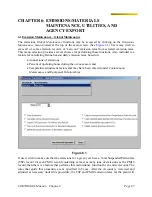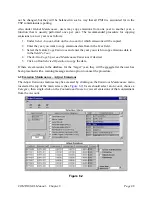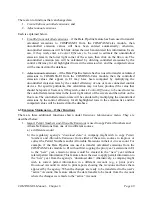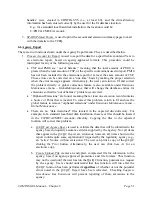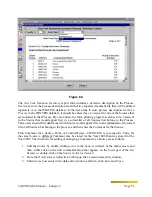
COMPASS-EI–Manual – Chapter 4
Page
38
Percent Control Efficiency:
9.
VOC
(Volatile Organic Compounds).
Represents the CIN’s efficiency for controlling volatile organic compounds.
10.
NOx
(Nitrogen Oxides).
Represents the CIN’s efficiency for controlling oxides of nitrogen.
11.
CO
(Carbon Monoxide).
Represents the CIN’s efficiency for controlling carbon monoxide.
12.
INORGANIC
(Inorganic Compounds).
Represents the CIN’s efficiency for controlling inorganic compounds.
13.
C4
(Organic compounds having 4 or more carbon atoms).
Represents the CIN’s efficiency for controlling heavier organics.
14.
NH3
(Ammonia).
Represents the CIN’s efficiency for controlling ammonia.
15.
SO2
(Sulfur Dioxide).
Represents the CIN’s efficiency for controlling sulfur dioxide.
16.
TSP
(Totaled Suspended Particulate).
Represents the CIN’s efficiency for controlling total suspended particulates.
17.
PM10
(Particulate Mater).
Represents the CIN’s efficiency for controlling particulate matter less than 10 microns in
aerodynamic diameter.
18.
C1-C3
(Organic compounds having 1 to 3 carbon atoms).
Represents the CIN’s efficiency for controlling lighter organics.
19.
H2S
(Hydrogen sulfide).
Represents the CIN’s efficiency for controlling hydrogen sulfide.
Operating Parameters:
20.
Inspection Schedule
(Mandatory).
Represents the inspection and maintenance schedule associated with the specified control
device.
Use the following codes:
A
– Annually
M
– Monthly
B
– Biannually
Q
– Quarterly
C
– Continuous
W
– Weekly
D
– Daily
21.
Annual Operating Hours.
The total amount of hours the specified control device(s) (CIN) normally operates in
dedicated service.

